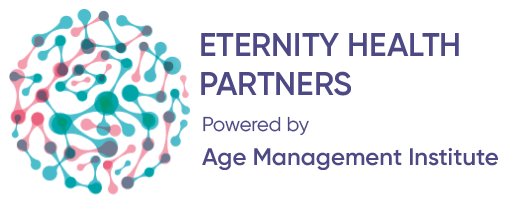A New Understanding on Testosterone Therapy
/In today’s society, there is a prevailing belief that only men over the age of 60 suffer from low testosterone. Unfortunately, this is simply not true. The symptoms of low testosterone can affect men regardless of physical condition, age or health. All men should be concerned about low testosterone, its symptoms, and what treatments are not only available, but safe.
The primary and often most discernible symptoms of low testosterone include insomnia, hair loss, erectile dysfunction, irritability, fatigue, infertility, loss of muscular strength, depression, reduced lean body mass, decreased libido, elevated blood pressure, and increased breast size. An initial history using the ADAM (Androgen Deficiency in the Aging Male) questionnaire will help give a preliminary view of the severity of the problem prior to comprehensive blood work. At AMI, this questionnaire is available from our online quiz and a useful initial tool to diagnosis.
There are significant long-term health problems that result from low testosterone (low T). Low T is associated with chronic medical conditions including depression, diabetes, obesity, and possibly cardiovascular disease. The relationship between low T and chronic disease may also be inverse. For example, the same processes which lead to high blood pressure and insulin resistance, could potentially be the root cause of a patient’s low T. In this respect, low T serves as a marker of overall health.
Testosterone is a very important male hormone that is integral to bodily functions, quality of life, and general well-being. Low T testing is easily accomplished with a blood test and treatment can have a profound effect on longevity and vitality. In general, a testosterone level above 500ng/dl (nanograms per deciliter) is considered healthy. However, as men age the total testosterone binds more to SHBG (sex hormone binding globulin) which will make free testosterone less bioavailable. Simply, a “normal” total testosterone lab value may be an inadequate picture of symptom management. Treatment goals must also seek to normalize both total testosterone and free testosterone. At AMI, free testosterone is the main number valued when making the diagnosis along with symptoms and health history.
What is considered to be “normal levels” of testosterone is for the most part a very individual and variable value. Most factors that influence testosterone levels are believed to be encoded within DNA and are thus genetic. However, external factors and lifestyle habits have a substantial impact on testosterone. A healthy, active lifestyle will favor optimal testosterone levels. This includes quality sleep, exercise, weight bearing activity, mental health, moderation of alcohol, avoiding tobacco, eating a balanced plant rich diet, and staying hydrated. Vitamins and minerals also influence free testosterone specifically Vitamin D3, Magnesium, and DHEA. At AMI, a comprehensive blood panel will be ordered to capture the full picture of an individual’s overall health and wellbeing.
There are a variety of available low testosterone treatments or TRT (testosterone replacement therapy). While oral TRT therapies exist and are popular for ease of use, their short half-lives tend to yield a less than optimal clinical and physical result. Injectable testosterone is the gold standard. Injections are normally given intramuscular or subcutaneously in the buttock or thigh twice a week. Injectable testosterone possesses differing time release characteristics and do not disrupt liver function. The controlled release also allows a more stable level of free testosterone to be bioavailable. Thus, symptoms are appropriately managed. However, when an exogenous form of testosterone is taken, there becomes a negative feedback loop in which the testes can atrophy. HCG (Human Chorionic Gonadotropin) keeps natural testosterone production stable, which maintains testicular size and boost endogenous production of testosterone. At AMI, HCG is included with all TRT regimes.
As men age, the connection between testosterone and energy levels and sexual health becomes more important. Testosterone production actually peaks in adolescence and early adulthood. After the age of 30, testosterone levels decrease at a rate of about 1% each year. Decreasing testosterone levels dwindles over all energy, sexual libido, mood, mental clarity, and sleep. Testosterone levels are also greatly impacted by stress. Men who are constantly exposed to stressful situations on the job or even in hobbies are more likely to experience low T. In terms of quality of health, low T should be viewed as a serious health issue.
Ultimately, optimal testosterone levels are the levels that work best for the individual client. For most men, these levels are at or close to the upper end of laboratory range with focus being given to free testosterone. It is important to note that reference ranges are not optimal ranges. Optimal is symptom management combined with safe and effective laboratory values. At AMI, each client is closely followed to ensure the highest quality of care.



